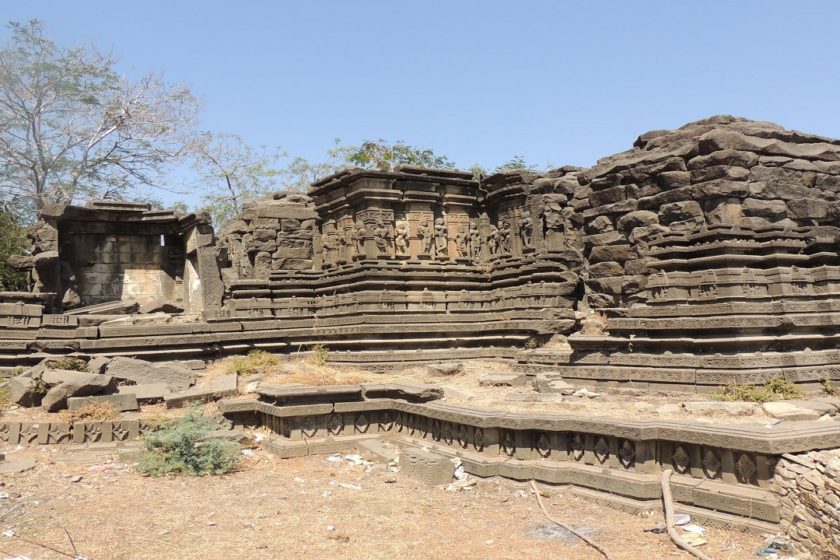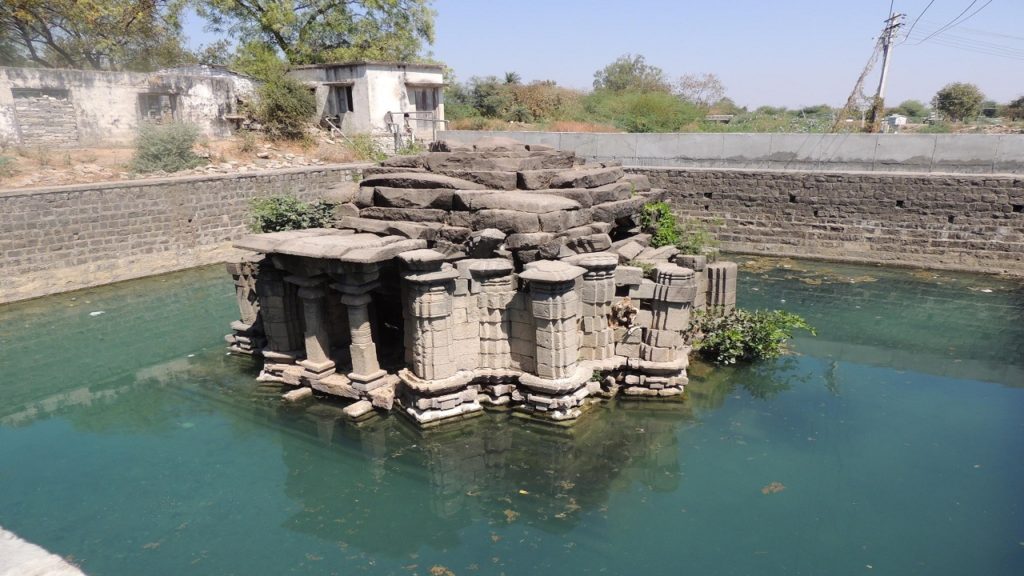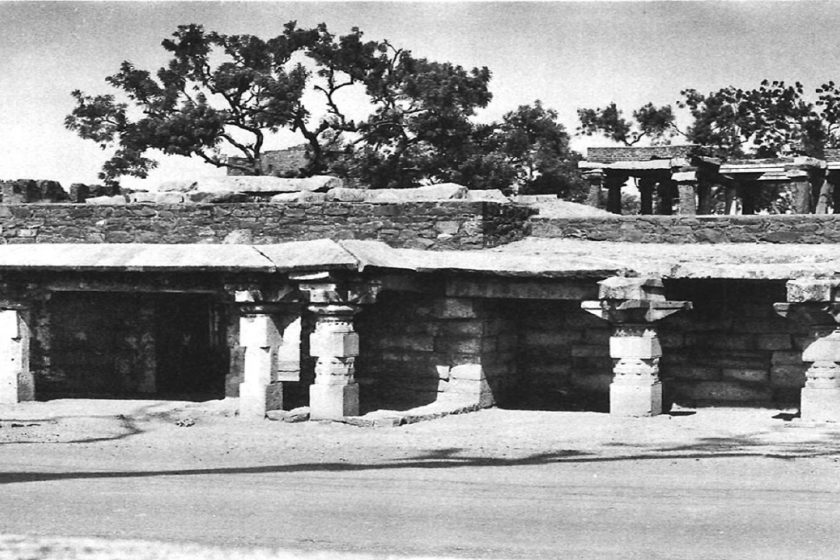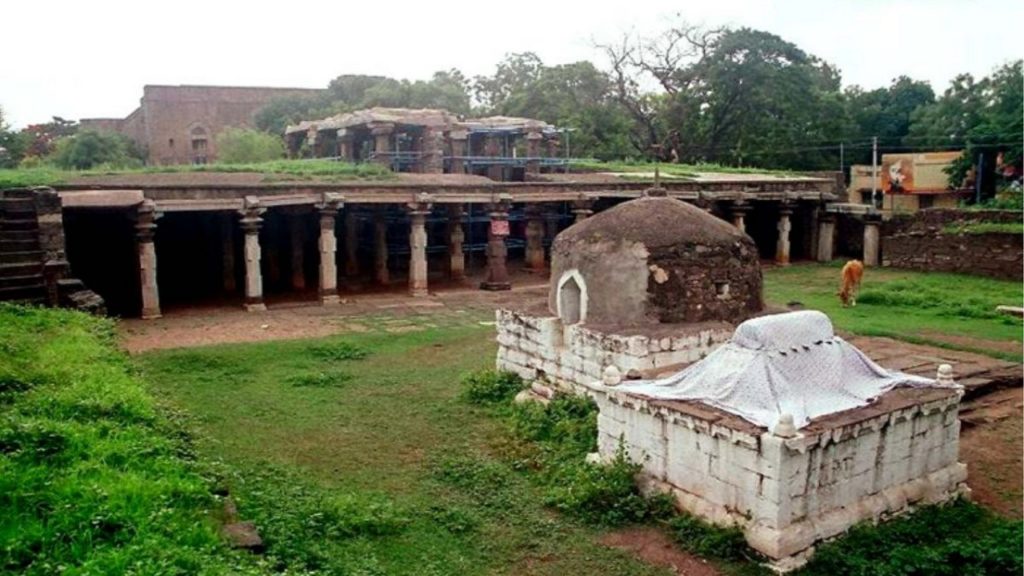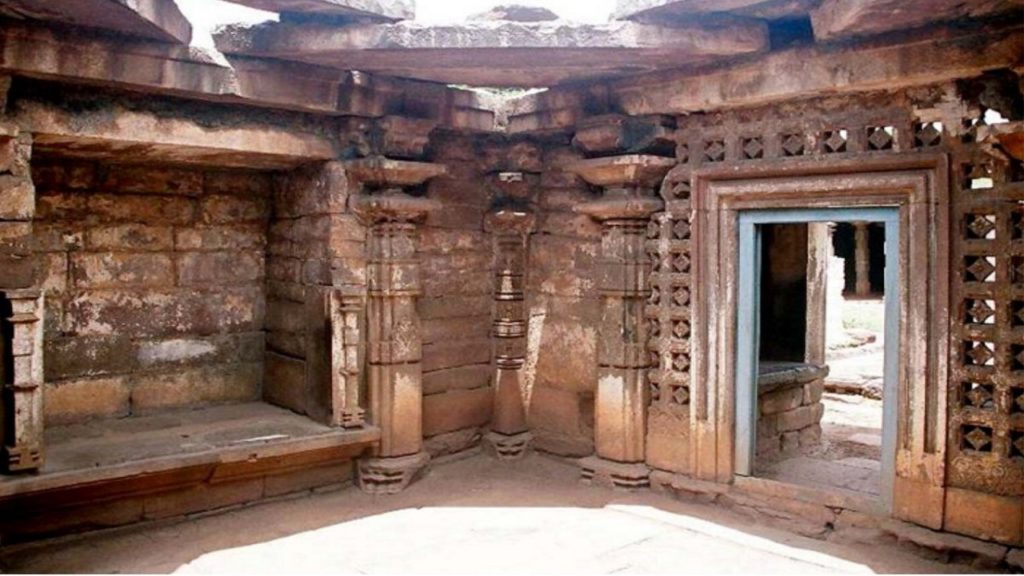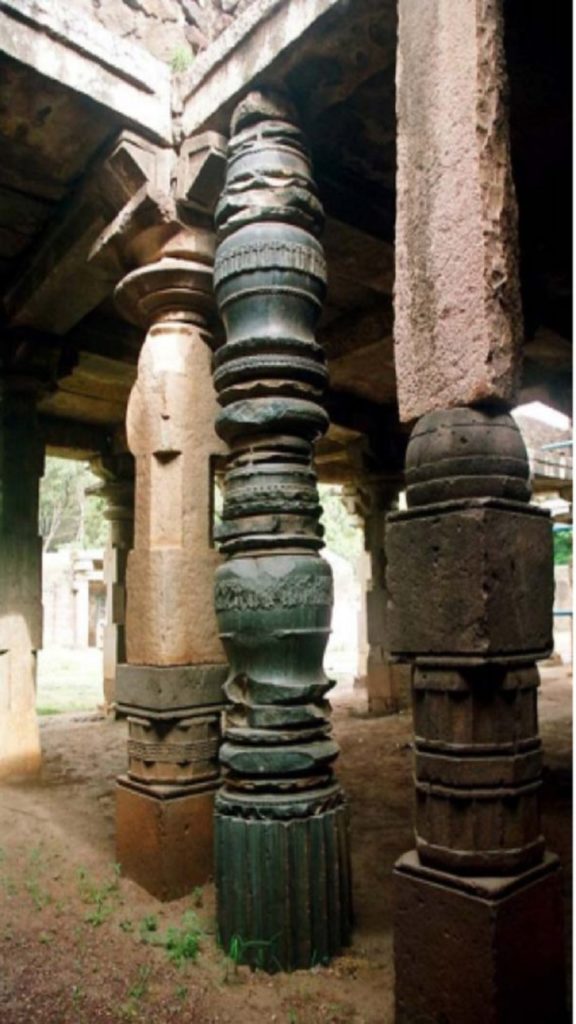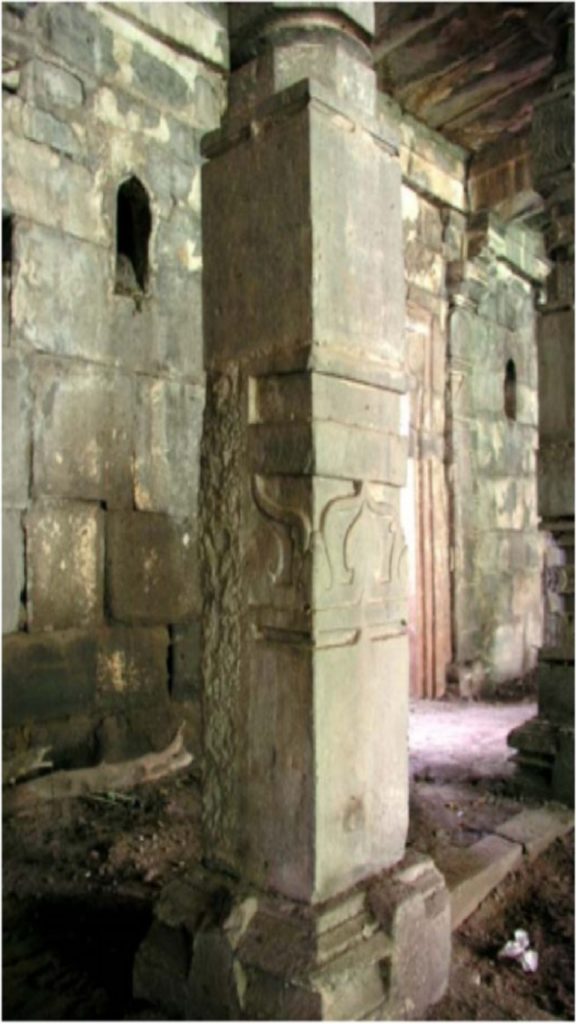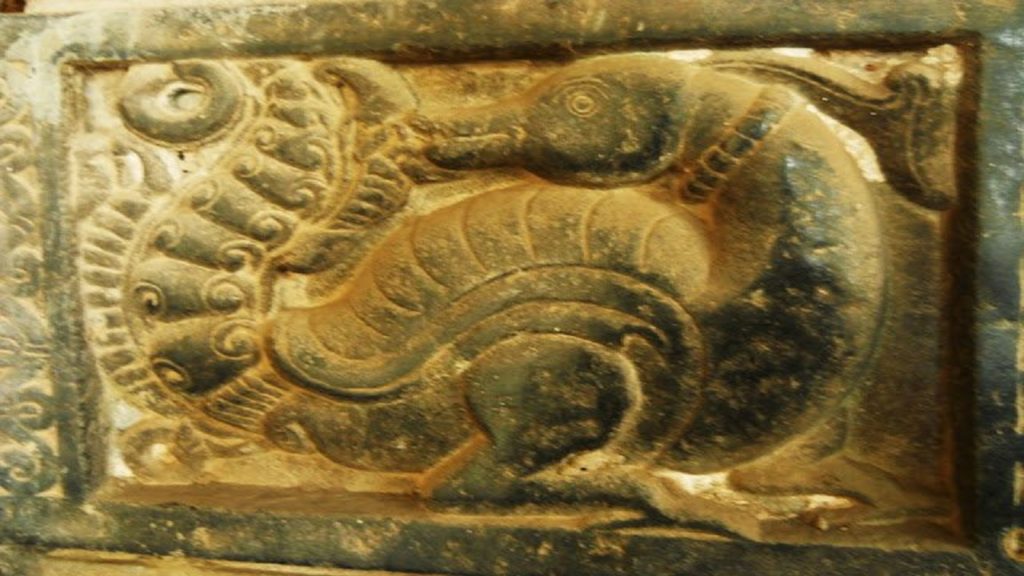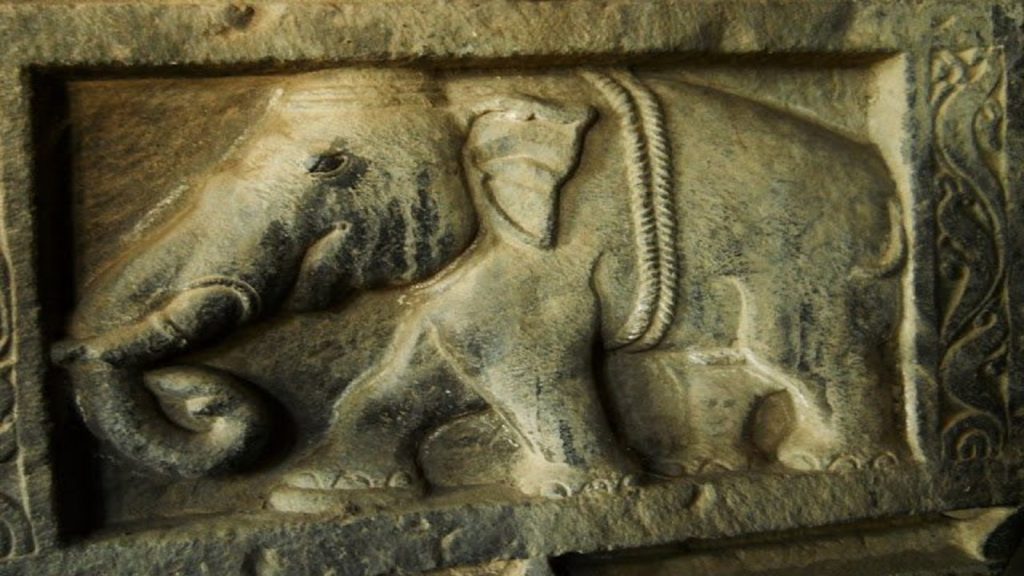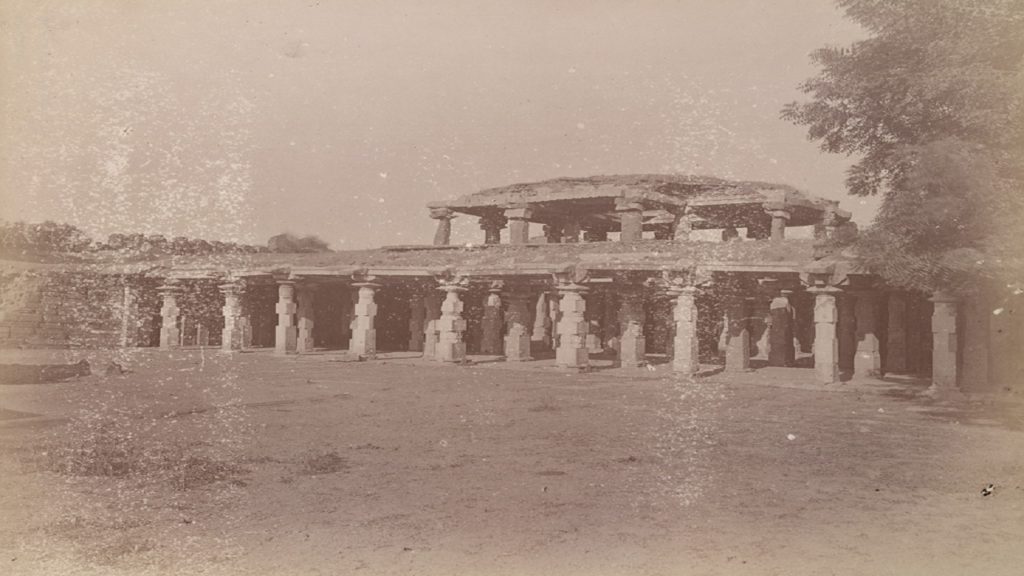Karnataka
List of Masjids in Karnataka which was built by destroying Hindu temples
LIST OF MOSQUES IN KARNATAKA WHICH WERE BUILT AFTER DEMOLISHING THE HINDU TEMPLES
We give below, state-wise and district-wise, the particulars of Muslim monuments which stand on the sites and/or have been built with the materials of Hindu temples, and which we wish to recall as witnesses to the role of Islam as a religion and the character of Muslim rule in medieval India. The list is the result of a preliminary survey. Many more Muslim monuments await examination. Local traditions which have so far been ignored or neglected have to be tapped on a large scale.
We have tried our best to be exact in respect of locations, names and dates of the monuments mentioned. Even so, some mistakes and confusions may have remained. It is not unoften that different sources provide different dates and names for the same monument. Many Muslim saints are known by several names, which create confusion in identifying their mazars or dargahs. Some districts have been renamed or newly, created and a place which was earlier under one district may have been included in another. We shall be grateful to readers who point out these mistakes so that they can be corrected in our major study. This is only a brief summary.
Sita Ram Goel
It should be kept in mind that the list below doesn’t include all the temples destroyed by Muslims and converted to mosques. The below is the list of mosques and Dargahs where evidences exists of having been made after destroying the temples at these locations. In many mosques, Muslim rulers were able to eradicate all signs of temples, and hence not given in below list.
Anyone is free to visit the below list of mosques and see the remnants and materials of Hindu temples used in their construction. Archaeological Survey of India should conduct an excavation of below mosques to find out more about the ancient temples in these locations and possible mass graves around the mosque sites.
I. BANGALORE DISTRICT
Dodda-Ballapur
1. Dargah of Muhiud-Din Chishti of Ajodhan (d.1700). Temple materials used.
Hoskot
2. Dargah of Saballi Sahib. Temple site.
3. Dargah of Qasim Sahib. Converted temple.
II. BELGAUM DISTRICT
Belgaum
4. Masjid-i-Safa in the Fort (1519). Temple site.
5. Jami Masjid (1585-86). Temple site.
6. Mazar of Badrud-Din Shah in the Fort (1351-52). Temple site.
Gokak
7. Masjid. Temple site.
Hukeri
8. Man Sahib-ki-Dargah (1567-68). Temple site.
9. Kali Masjid (1584). Temple materials used.
Kudachi
10. Dargah of Makhdum Shah Wali. Temple site.
11. Mazar of Shykh Muhammad Sirajud-Din Pirdadi. Temple site.
Madbhavi
12. , Masjid. Shiva Temple materials used.
Raibag
13. Jami Masjid. Temple site
Sampgaon
14. Masjid. Temple site.
III. BELLARY DISTRICT
Bellary
15. Masjid built by Tipu Sultan (1789-90). Temple site.
Hampi
16. Masjid and Idgah in the ruins of Vijayanagar. Temple materials used.
Hospet
17. Masjid in Bazar Street built by Tipu Sultan (1795-96). Temple site.
Huvinhadgalli
18. Fort. Temple materials used.
Kanchagarabelgallu
19. Dargah of Husain Shah. Temple site.
Kudtani
20. Dargah. Durgesvara Temple materials used.
Sandur
21. Jami Masjid. Temple site.
Siruguppa
22. Lad Khan Masjid (1674). Temple site.
Sultanpuram
23. Masjid on the rock. Temple site.
IV. BIDAR DISTRICT
Bidar
Ancient Hindu city transformed into a Muslim capital. The following monuments stand on temple sites and/or temple materials have been used in their construction:
24. Sola Khamba Masjid (1326-27).
25. Jami Masjid of the Bahmanis.
26. Mukhtar Khan-ki-Masjid (1671).
27. Kali Masjid (1694).
28. Masjid west of Kali Masjid (1697-98).
29. Farrah-Bagh Masjid, 3 km outside the city (1671).
30. Dargah of Hazrat Khalilullah at Ashtur (1440).
31. Dargah of Shah Shamsud-Din Muhammad Qadiri known as Multani Padshah.
32. Dargah of Shah Waliullah-al-Husaini.
33. Dargah of Shah Zainul-Din Ganj Nishin.
34. Dargah and Masjid of Mahbub Subhani.
35. Mazar of Ahmad Shah Wali at Ashtur (1436).
36. Mazar of Shah Abdul Aziz (1484).
37. Takht Mahal.
38. Gagan Mahal.
39. Madrasa of Mahmud Gawan.
Chandpur
40. Masjid (1673-74). Temple site.
Chillergi
41. Jami Masjid (1381). Temple site.
Kalyani
Capital of the Later Chalukyas. All their temples were either demolished or converted into mosques.
42. Jami Masjid (1323). Temple site.
43. Masjid (1406). Temple site.
44. Masjid in Mahalla Shahpur (1586-87). Temple site.
45. Dargah of Maulana Yaqub. Temple site.
46. Dargah of Sayyid Pir Pasha. Temple site.
47. Fort Walls and Towers. Temple materials used.
48. Nawabs Bungalow. Temple materials used.
Kohir
49. Jami Masjid. Temple site.
50. Dargahs of two Muslim saints. Temple sites.
Shahpur
51. Masjid (1586-87). Temple site.
Udbal
52. Jami Masjid (1661-62). Temple site.
V. BIJAPUR DISTRICT
Afzalpur
53. Mahal Masjid. Trikuta Temple materials used.
Badami
54. Second Gateway of the Hill Fort. VishNu Temple materials used.
Bekkunal
55. Dargah outside the village. Temple materials used.
Bijapur
Ancient Hindu city transformed into a Muslim capital. The following monuments are built on temple sites and/or temple materials have been used in their construction:
56. Jami Masjid (1498-99).
57. Karimud-Din-ki-Masjid in the Ark (1320-21).
58. ChhoTa Masjid on way to Mangoli Gate.
59. Khwaja Sambal-ki-Masjid (1522-13).
60. Makka Masjid.
61. Andu Masjid.
62. Zangiri Masjid.
63. Bukhara Masjid (1536-37).
64. Dakhini Idgah (1538-39).
65. Masjid and Rauza of Ibrahim II Adil Shah (1626).
66. Gol Gumbaz or the Rauza of Muhammad Adil Shah.
67. Jod-Gumbad.
68. Nau-Gumbad.
69. Dargah of Shah Musa Qadiri.
70. Gagan Mahal.
71. Mihtar Mahal.
72. Asar Mahal.
73. Anand Mahal and Masjid (1495).
74. Sat Manzil.
75. Ark or citadel.
76. Mazar of Pir Mabari Khandayat.
77. Mazar of Pir Jumna.
78. Dargah of Shah Miranji Shamsul-Haq Chishti on Shahpur Hill.
Hadginhali
79. Dargah. Temple materials used.
Horti
80. Masjid. Temple materials used.
Inglesvara
81. Muhiud-Din Sahib-ki-Masjid. Munipa Samadhi materials used.
Jirankalgi
82. Masjid. Temple materials used.
Kalleeri
83. Masjid near the village Chawdi. Kesavadeva Temple materials used.
Mamdapur
84. Jami Masjid. Temple site.
85. Mazar of Kamal Sahib. Temple site.
86. Mazar of Sadle Sahib of Makka. Temple site.
Naltvad
87. Masjid (1315). Temple materials used.
Pirapur
88. Dargah. Temple site.
Salvadigi
89. Masjid. Temple materials used.
Sarur
90. Masjid. Temple materials used.
Segaon
91. Dargah. Temple site.
Takli
92. Masjid. Temple materials used.
Talikota
93. Jami Masjid. Jain Temple materials used.
94. Panch Pir-ki-Masjid and Ganji-i-Shahidan. Temple site.
Utagi
95. Masjid (1323). Temple site.
VI. CHICKMANGLUR DISTRICT
Baba Budan
96. Mazar of Dada Hayat Mir Qalandar. Dattatreya Temple site.
VII. CHITRADURG DISTRICT
Harihar
97. Masjid on top of Hariharesvara Temple.
VIII. DHARWAD DISTRICT
Alnavar
98. Jami Masjid. Jain Temple materials used.
Bankapur
99. Masjid (1538-39). Temple site.
100. Jami Masjid (1602-03). Temple site.
101. Graveyard with a Masjid. Temple site.
102. Dongar-ki-Masjid. Temple site.
103. Dargah of Shah Alaud-Din-Qadiri. Temple site.
104. Fort (1590-91). Temple materials used.
Balur
105. Masjid. Temple materials used.
Dambal
106. Mazar of Shah Abdullah Wali. Temple materials used.
Dandapur
107. Jami Masjid. Temple materials used.
Dharwad
108. Masjid on Mailarling Hill. Converted Jain Temple.
Hangal
109. Jami Masjid. Temple site.
110. Masjid in the Fort. Temple site.
Hubli
111. 17 Masjids built by Aurangzeb in 1675 and after Temple sites.
Hulgur
112. Dargah of Sayyid Shah Qadiri. Temple site.
113. Masjid near the above Dargah. Temple site.
Lakshmeshwar
114. Kali Masjid. Temple site.
Misrikot
115. Jami Masjid (1585-86). Temple site.
Mogha
116. Jami Masjid. Adityadeva Temple materials used.
Ranebennur
117. Qala, Masjid (1742). Temple site.
Savanur
118. Jami Masjid reconstructed in 1847-48. Temple site.
119. Dargah of Khairullah Shah Badshah. Temple site.
120. Dargah and Masjid of Shah Kamal. Temple site.
IX. GULBARGA DISTRICT
Chincholi
121. Dargah. Temple site.
Dornhalli
122. Masjid. Temple site.
Firozabad
123. Jami Masjid (1406). Temple site.
124. Dargah of Shah Khalifatur-Rahman Qadiri (d.1421). Temple site.
Gobur
125. Dargah. Ratnaraya Jinalaya Temple materials used.
Gogi
126. Arabaa Masjid (1338). Temple site.
127. Dargah of Pir Chanda, Husaini (1454). Temple site.
128. Chilla of Shah Habibullah (1535-36). Temple site.
Gulbarga
Ancient Hindu city converted into a Muslim capital and the following among other
monuments built on temple sites and/or with temple materials:
129. Kalan Masjid in Mahalla Mominpura (1373).
130. Masjid in Shah Bazar (1379).
131. Jami Masjid in the Fort (1367).
132. Masjid-i-Langar in the Mazar of Haji Zaida.
133. Masjid near the Farman Talab (1353-54).
134. Dargah of Sayyid Muhammad Husaini Banda, Nawaz Gesu Daraz Chishti, disciple of Shykh Nasirud-Din Mahmud Chiragh-i-Dihli.
135. Mazar of Shykh Muhammad Sirajud-Din Junaidi.
136. Mazar of Haji Zaida of Maragh (1434)
137. Mazar of Sayyid Husainud-Din Tigh-i-Barhna (naked sword).
138. Fort Walls and Gates.
Gulsharam
139. Dargah and Masjid of Shah Jalal Husaini (1553). Temple site.
Malkhed
140. Dargah of Sayyid Jafar Husaini in the Fort. Temple site.
Sagar
141. Dargah of Sufi Sarmast Chishti, disciple of Nizamud-Din Awliya of Delhi. Temple site.
142. Dargah of Munawwar Badshah. Temple site.
143. Ashur Khana Masjid (1390-91). Temple site.
144. Fort (1411-12). Temple materials used.
Seram
145. Jami Masjid. Temple materials used.
Shah Bazar
146. Jami Masjid. Temple site.
Shahpur
147. Dargah of Musa Qadiri (1667-68). Temple site.
148. Dargah of Muhammad Qadiri (1627). Temple site.
149. Dargah of IbrahIm Qadiri. Temple site.
Yadgir
150. Athan Masjid (1573). Temple site.
151. Jami Masjid. Temple site.
X. KOLAR DISTRICT
Mulbagal
152. Dargah of Hyder Wali. Temple site.
Nandi
153. Masjid east of the village. Temple site.
XI. MANDYA DISTRICT
Pandavapur
154. Masjid-i-Ala. Temple site.
Srirangapatnam
155. Jami Masjid built by Tipu Sultan (1787). Stands on the site of the Anjaneya Temple.
XII. MYSORE DISTRICT
Tonnur
156. Mazar said to be that of Sayyid Salar Masud (1358). Temple materials used.
XIII. NORTH KANARA DISTRICT
Bhatkal
157. Jami Masjid (1447-48). Temple site.
Haliyal
158. Masjid in the Fort. Temple materials used.
XIV. RAICHUR DISTRICT
Jaladurga
159. Dargah of Muhammad Sarwar. Temple site.
Kallur
160. Two Masjids. Temple sites.
Koppal
161. Jami Masjid. Temple site.
162. Arabon-ki-Masjid. Temple site.
163. Dargah of Sailani Pasha. Temple site.
Manvi
164. Masjid (1406-07). Temple materials used.
Mudgal
165. Masjid at Kati Darwaza of the Fort. Temple materials used.
166. Nai Masjid (1583-84). Temple site.
167. Two Ashur Khanas built by Ali I Adil Shah. Temple site.
168. Fort (1588). Temple materials used.
Raichur
169. Yak Minar Masjid in the Fort (1503). Temple site.
170. Daftari Masjid in the Fort (1498-99). Temple materials used.
171. Hazar Baig Masjid (1511-12). Temple site
172. Jami Masjid in the Fort (1622-23). Temple materials used.
173. Jami Masjid in Sarafa Bazar (1628-29). Temple site.
174. Kali Masjid in the Fort. Temple materials used.
175. Masjid inside the Naurangi. Temple materials used.
176. Chowk-ki-Masjid. Temple site.
177. Jahaniya Masjid (1700-01). Temple site.
178. Dargah of Shah Mir Hasan and Mir Husain. Temple materials used.
179. Dargah of Sayyid Abdul Husaini at Sikandari Gate. Temple site.
180. Panch Bibi Dargah at Bala Hissar. Temple materials used.
181. Mazar of Pir Sailani Shah in the Fort. Temple materials used.
182. Fort. Temple materials used.
Sindhanur
183. Alamgiri Masjid near the Gumbad. Temple site.
Tawagera
184. Dargah of Banda Nawaz. Temple site.
XV. SHIMOGA DISTRICT
Almel
185. Mazar of Ghalib Shah. Temple site.
Basavpatna
186. Masjid near the Fort. Temple site.
Nagar
187. Masjid built by Tipu Sultan. Temple materials used.
Sante Bennur
188. Randhulla Khan-ki-Masjid (1637). Materials of the Ranganatha Temple used.
Sirajpur
189. Masjid built on top of the Chinnakesava Temple for housing Prophet Muhammads hair. Images defaced and mutilated. Part of the temple used as a laterine.
XVI. TUMKUR DISTRICT
Sira
190. Ibrahim Rauza with many Mazars and a Jami Masjid. Converted temples.
191. Dargah of Malik Rihan. Temple site.
Sirol
192. Jami Masjid (1696). Temple site.
EVIDENCE IS AVAILABLE THAT IN KARNATAKA THE ABOVE MENTIONED MOSQUES AND DARGAHS WERE CONSTRUCTED BY DESTROYING HINDU TEMPLES. BUT IN MANY OTHER CASES MUSLIMS SUCCEEDED IN REMOVING ALL TRACES OF TEMPLES FROM THE MOSQUES. IN SUCH CASES ONLY AN EXCAVATION BY ASI WILL REVEAL THE DESTROYED TEMPLES.
WHILE MUSLIMS ASK FOR REBUILDING THE ILLEGAL MOSQUE IN AYODHYA, WHY SHOULD NOT HINDUS DEMAND THE RECONSTRUCTION OF THE DESTROYED TEMPLES IN INDIA?

